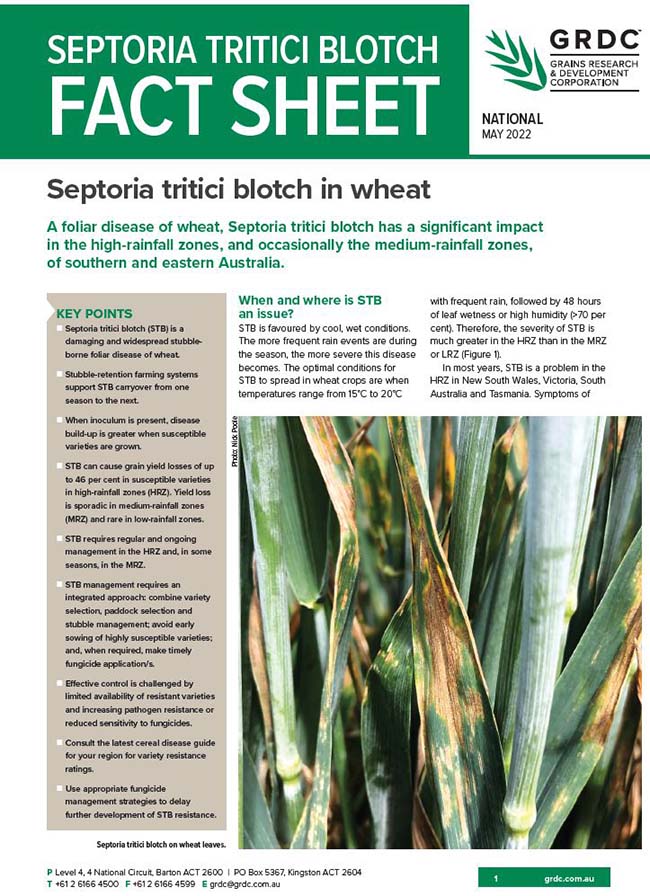Septoria tritici blotch in wheat
Septoria tritici blotch in wheat
Published: 25 May 2022
A foliar disease of wheat, Septoria tritici blotch has a significant impact in the high-rainfall zones, and occasionally the medium-rainfall zones, of southern and eastern Australia.
Key points
- Septoria tritici blotch (STB) is a damaging and widespread stubble-borne foliar disease of wheat.
- Stubble-retention farming systems support STB carryover from one season to the next.
- When inoculum is present, disease build-up is greater when susceptible varieties are grown.
- STB can cause grain yield losses of up to 46 per cent in susceptible varieties in high-rainfall zones (HRZ). Yield loss is sporadic in medium-rainfall zones (MRZ) and rare in low-rainfall zones.
- STB requires regular and ongoing management in the HRZ and, in some seasons, in the MRZ.
- STB management requires an integrated approach: combine variety selection, paddock selection and stubble management; avoid early sowing of highly susceptible varieties; and, when required, make timely fungicide application/s.
- Effective control is challenged by limited availability of resistant varieties and increasing pathogen resistance or reduced sensitivity to fungicides.
- Consult the latest cereal disease guide for your region for variety resistance ratings.
- Use appropriate fungicide management strategies to delay further development of STB resistance.
Download PDF
Region: National
GRDC Project Code: DAN1703-011BLX, DPI1807-011BLX, DPI1507-002BLX, DAV1304-003RTX, DAV1306-005BLX, DJP1907-001RTX, DJP1905-002SAX, FAR1606-001WCX,

